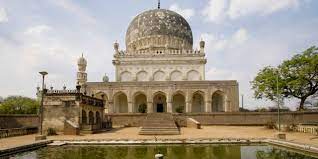
Unveiling the Enchanting Features of the Deccan School of Miniature Painting
Introduction
The Deccan School of Miniature Painting, an illustrious artistic tradition that flourished in the Deccan region of India during the 16th to 19th centuries, stands as a testament to the rich cultural heritage of the area. This unique art form captivated audiences with its distinctive style, exquisite details, and vibrant color schemes. In this article, we will explore the significant features that make the Deccan School of Miniature Painting an enchanting and captivating artistic genre.
I. Fusion of Styles and Influences
One of the defining features of the Deccan School of Miniature Painting is its remarkable fusion of various artistic styles and influences. The Deccan region, with its cosmopolitan atmosphere and historical connections, witnessed the convergence of Persian, Mughal, and indigenous artistic traditions. This amalgamation resulted in a unique visual language that set the Deccan School apart from other miniature painting schools in India. We will delve into the intricate interplay of these styles and their impact on the evolution of the Deccan School of Miniature Painting.
II. Sublime Color Palette
The vibrant and mesmerizing color palette employed in the Deccan School of Miniature Painting is a distinguishing characteristic of this art form. The artists skillfully utilized vivid pigments, often derived from minerals, to create a stunning array of hues. The use of intense blues, deep greens, rich reds, and vibrant yellows, along with the delicate application of gold leaf, lent a captivating aura to the artwork. We will explore the significance of color symbolism in Deccan Miniature Painting and how it enhanced the overall visual impact.
III. Intricate Details and Elaborate Patterns
The Deccan School of Miniature Painting is celebrated for its meticulous attention to detail and the intricate patterns that adorn its compositions. From the fine brushwork used to depict facial expressions and textile textures to the elaborate geometric designs and floral motifs that embellish the borders, every aspect of the artwork exudes a sense of refinement and precision. We will examine the techniques employed by artists to achieve such intricate details and the symbolic meanings associated with the patterns used in Deccan Miniature Painting.
IV. Refined Portraiture and Narrative Expression
Portraiture played a significant role in the Deccan School of Miniature Painting, allowing artists to capture the essence of individuals and convey their unique personalities. The portraits often depicted rulers, nobles, and courtiers in great detail, emphasizing their regal attire and distinguishing features. Furthermore, narrative expression was skillfully incorporated into the compositions, enabling the artists to depict stories from history, mythology, and literature. We will explore the nuanced storytelling techniques and the ways in which the Deccan artists brought life to their narratives through their exceptional storytelling abilities.
V. Sufi Mysticism and Spiritual Themes
Sufi mysticism and spiritual themes held profound significance in the Deccan region, and these themes found their expression in the art of miniature painting. The Deccan School beautifully depicted the mystical experiences, spiritual journeys, and transcendent states of Sufi saints through symbolic imagery and metaphors. We will delve into the spiritual dimensions of the Deccan Miniature Painting and the ways in which it conveyed the ethereal realm of Sufi thought and practice.
Conclusion
The Deccan School of Miniature Painting mesmerizes art enthusiasts with its fusion of styles, vibrant color palette, intricate details, refined portraiture, and spiritual themes. This art form, which flourished during the vibrant Deccan era, continues to captivate audiences with its unique visual language and cultural significance. By appreciating the distinct features of the Deccan School, we gain a deeper understanding of its artistic brilliance and its invaluable contribution to the world of miniature painting.